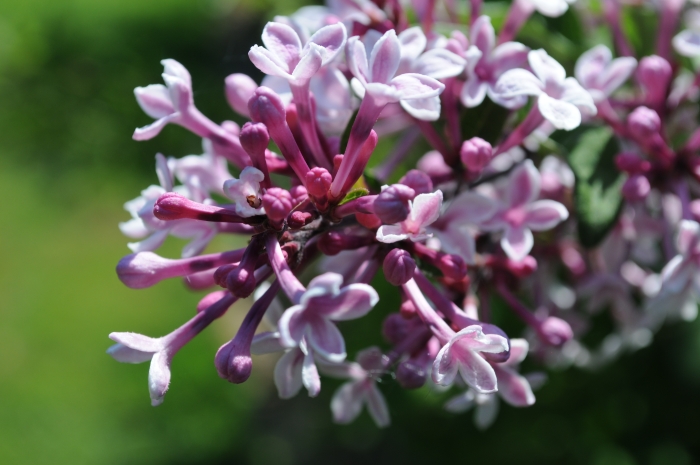Littleleaf Lilac
(Syringa microphylla)
Littleleaf Lilac (Syringa microphylla)
/
/

Dcoetzee
CC0

























Estimated Native Range
Summary
This shrub is valued for its extended blooming period, ease of maintenance, and resistance to powdery mildew, a common problem in some lilac species. It is often used in border plantings, as a specimen plant, or for hedges in residential gardens. Littleleaf Lilac thrives in full sun but can tolerate part shade. It prefers well-drained soils and requires medium amounts of water, making it relatively drought-tolerant once established. While it is not known for aggressive roots or serious disease issues, it can be susceptible to lilac borer and scale insects. Pruning immediately after flowering helps maintain its shape and encourages more prolific blooms for the following season.CC BY-SA 4.0
Plant Description
- Plant Type: Shrub
- Height: 4-6 feet
- Width: 10-12 feet
- Growth Rate: Moderate
- Flower Color: Pink, Purple, White
- Flowering Season: Spring
- Leaf Retention: Deciduous
Growth Requirements
- Sun: Full Sun, Part Shade
- Water: Medium
- Drainage: Medium
Common Uses
Bank Stabilization, Bee Garden, Bird Garden, Butterfly Garden, Deer Resistant, Drought Tolerant, Erosion Control, Fragrant, Hummingbird Garden, Rabbit Resistant, Salt Tolerant, Showy Flowers, Street Planting
Natural Habitat
Native to limestone hills and scrublands of North and East Asia, particularly in regions of China
Other Names
Common Names: Daphne Lilac, Småbladig Syren, Xiao Ye Qiao Ling Hua
Scientific Names: , Syringa microphylla, Syringa pubescens subsp. microphylla, Syringa julianae, Syringa potaninii, Syringa giraldiana, Syringa pubescens subsp. julianae, Syringa pubescens var. potaninii, Syringa dielsiana, Syringa microphylla var. glabriuscula
GBIF Accepted Name: Syringa pubescens subsp. microphylla (Diels) M.C.Chang & X.L.Chen